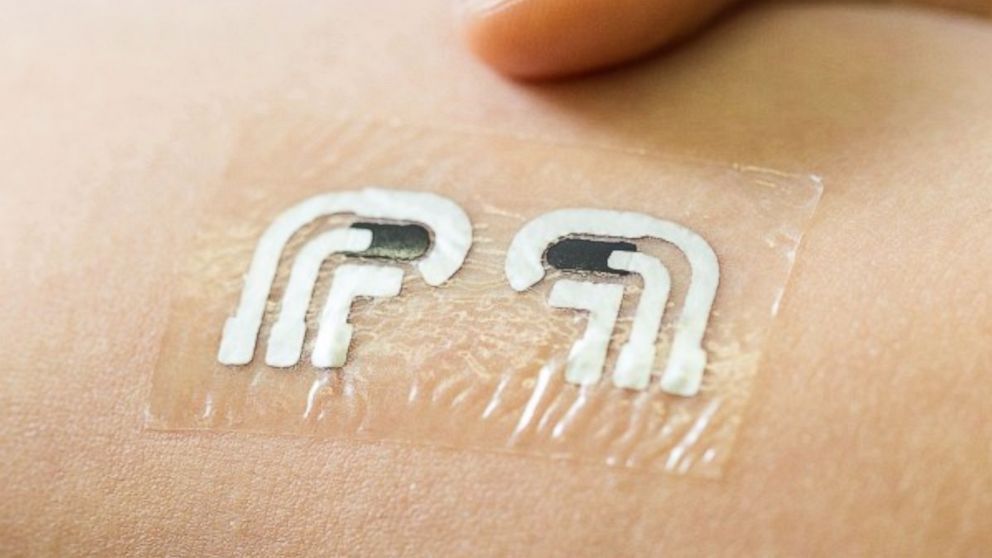How a Researcher Is Trying to Turn Tattoos Into Medical Devices
Dr. Joseph Wang has designed tiny "tattoo" sensors.

— -- A California researcher is trying to turn "tattoos" into tiny "medical labs" -- with early prototypes able to monitor a person's workout or measure a diabetic's blood-glucose levels.
A team led by Dr. Joseph Wang, chairman of nanoengineering at the University of California San Diego, first developed the fitness-tracker temporary tattoo designed to measure a key chemical on the skin that can give insight into a person's workout.
The sticker-like "tattoo" was able to correctly measure 10 people's lactate levels through their skin using a special sensor in a small study published in Analytical Chemistry in 2013. The lactate chemical is excreted during exercise and, basically, the more intense a workout the higher the levels.
A newer version also will be able to tell if an athlete is hydrated, Wang said.
Rumored Apple Health Book Could Shake-Up the Industry
Fitbit Does More than Track Fitness
The tattoo fitness tracker is being developed for commercial use through the company Electrozyme, which claims it will be able to alert users if they need to re-hydrate or take in more electrolytes, or are in danger of overheating.
"The hydration level will tell you the level of fitness and lactate will tell you muscle fatigue," Wang said of the new tracker.
The product has not been approved by the Food and Drug Administration.
More recently, Wang has been working to introduce another, more complex tattoo that could help diabetics accurately read their blood-glucose levels without using a needle.
In a small study of seven people between the ages of 20 to 40, Wang and his team were able to correctly measure glucose with the tiny sensors. In the recent study, which was published in Analytical Chemistry, the volunteers ate a carb-heavy meal and then their glucose or blood sugar was monitored every 10 minutes for the next hour.
To measure blood-sugar levels, the two tiny electrodes are able to use small electrical currents to pull out glucose from under the skin without breaking the skin.
"The goal is to replace the finger stick blood [for] all the diabetics," Wang told ABC News.
Wang said more work and research is needed, but the tattoo could provide less invasive way for diabetics to read their glucose levels.
Wang added that his team wants to incorporate fun imagery in the tattoos so that even young children won't mind wearing a small tattoo sensor.
"In children, they don’t like finger stick ... [so] we put Mickey Mouse over them," Wang said of the thin sensors. "They really like to play with this."




